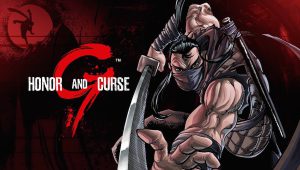
‘Dying for a Living:’ Book Review
After the barn fire Jesse Sullivan deliberately set to kill her abusive step-father Eddie, it was revealed that she was infected with the NRD virus

After the barn fire Jesse Sullivan deliberately set to kill her abusive step-father Eddie, it was revealed that she was infected with the NRD virus

After losing his students and mentor to the Devil Marauders in The Hawk of New York #3, Eric descends into a darkness that can only

Genshi is a tormented man. Nightmares of the night his family was brutally murdered haunt him, and he has started seeing visions of a supernatural

The creative team behind Escape from Jesus Island is back with the fourth installment in the action-horror-sacrilegious series about an unscrupulous corporation that claims to have

We live in a world inundated with books and movies focusing on dystopias: The Hunger Games, Divergent, The Fifth Wave, The Maze Runner, etc. It’s
My immediate family is made up of introverts and geeks, but somehow I never was fully exposed to Star Wars (or Star Trek for that
Ever since she was seventeen years old, Dale Highland has been on the run: from her unexplained murderous blackouts she calls Rages; from an aunt
Game of Thrones Psychology: The Mind is Dark and Full of Terrors is an upcoming book full of essays delving into the psyches and psychoses
Kodansha Comics is probably best known in the US (and among the WonderCon crowd) for bringing the hit manga, Attack on Titan, to English-speaking readers.
On Saturday, March 26, moderator Brian Ward (The Arkham Sessions) brought together a panel of geeky entrepreneurs to share their successes and challenges with eager